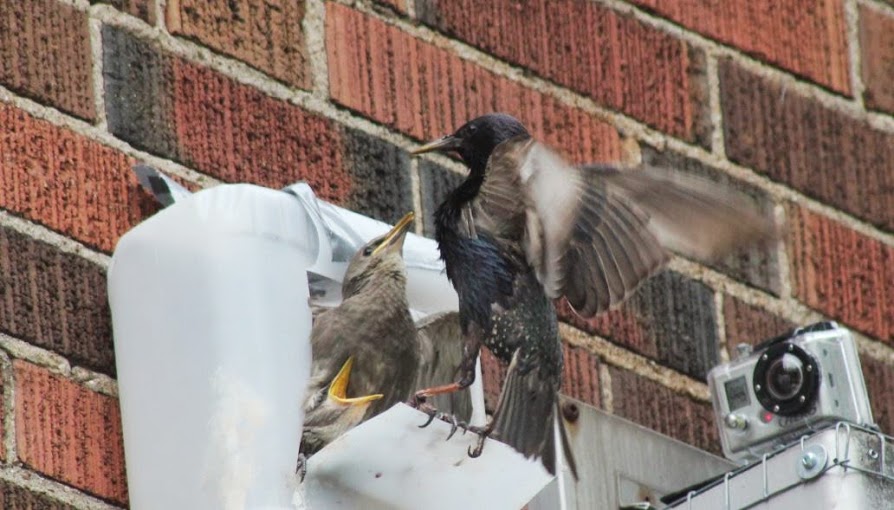The Bright Side
From a distance, starlings are fairly nondescript black birds that congregate in large flocks, known poetically as murmurations. On closer inspection you can discern that individuals are covered in white spots, their necks washed in shiny green and wings an iridescent purple. The combined voices in a chorus of flocking Starlings can be loud and cacophonous, with each singer contributing its own rendition of purrs, chatters, screams, and rattles. They have a talent for imitating other birds, animals, and machinery, and have been taught to whistle and even talk, like their close relative the myna bird. It's no wonder the American Acclimatization Society brought these beautiful European songbirds to the New World in the late 1800s. Shakespeare mentioned them, Mozart borrowed their notes, and ancient Romans interpreted their flight patterns like tea leaves in the bottom of a cup. Akin to species like cats and horses, Starlings were a part of daily life across Europe, and North Americans wanted them here, too. Two little flocks were thus released in Central Park and the rest is history.The Down Side
Since Starlings were not historical members of North American fauna, they are known by scientists as an exotic species, and because they have spread in large numbers throughout the continent, they are also considered invasive. Just being labeled an invasive exotic is enough to make many ecologically-minded bird lovers cringe at the sight of one. To further taint their reputations, in 2004 Starlings became the third avian species ever nominated by scientists to the "100 World's Worst" invasive species list. Why are Starlings the black sheep of the bird world? Here are a few of the problems they cause:- Damaging crops at a value worth upwards of $800 million per year
- Spreading diseases to poultry, pigs, and humans
- Nesting inside homes, creating unsanitary conditions
- Roosting in neighborhood trees and render sidewalks below unsafe



